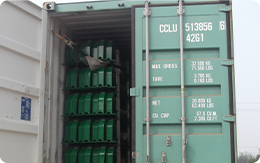 Afrikaans
Afrikaans  Albanian
Albanian  Amharic
Amharic  Arabic
Arabic  Armenian
Armenian  Azerbaijani
Azerbaijani  Basque
Basque  Belarusian
Belarusian  Bengali
Bengali  Bosnian
Bosnian  Bulgarian
Bulgarian  Catalan
Catalan  Cebuano
Cebuano  Corsican
Corsican  Croatian
Croatian  Czech
Czech  Danish
Danish  Dutch
Dutch  English
English  Esperanto
Esperanto  Estonian
Estonian  Finnish
Finnish  French
French  Frisian
Frisian  Galician
Galician  Georgian
Georgian  German
German  Greek
Greek  Gujarati
Gujarati  Haitian Creole
Haitian Creole  hausa
hausa  hawaiian
hawaiian  Hebrew
Hebrew  Hindi
Hindi  Miao
Miao  Hungarian
Hungarian  Icelandic
Icelandic  igbo
igbo  Indonesian
Indonesian  irish
irish  Italian
Italian  Japanese
Japanese  Javanese
Javanese  Kannada
Kannada  kazakh
kazakh  Khmer
Khmer  Rwandese
Rwandese  Korean
Korean  Kurdish
Kurdish  Kyrgyz
Kyrgyz  Lao
Lao  Latin
Latin  Latvian
Latvian  Lithuanian
Lithuanian  Luxembourgish
Luxembourgish  Macedonian
Macedonian  Malgashi
Malgashi  Malay
Malay  Malayalam
Malayalam  Maltese
Maltese  Maori
Maori  Marathi
Marathi  Mongolian
Mongolian  Myanmar
Myanmar  Nepali
Nepali  Norwegian
Norwegian  Norwegian
Norwegian  Occitan
Occitan  Pashto
Pashto  Persian
Persian  Polish
Polish  Portuguese
Portuguese  Punjabi
Punjabi  Romanian
Romanian  Russian
Russian  Samoan
Samoan  Scottish Gaelic
Scottish Gaelic  Serbian
Serbian  Sesotho
Sesotho  Shona
Shona  Sindhi
Sindhi  Sinhala
Sinhala  Slovak
Slovak  Slovenian
Slovenian  Somali
Somali  Spanish
Spanish  Sundanese
Sundanese  Swahili
Swahili  Swedish
Swedish  Tagalog
Tagalog  Tajik
Tajik  Tamil
Tamil  Tatar
Tatar  Telugu
Telugu  Thai
Thai  Turkish
Turkish  Turkmen
Turkmen  Ukrainian
Ukrainian  Urdu
Urdu  Uighur
Uighur  Uzbek
Uzbek  Vietnamese
Vietnamese  Welsh
Welsh  Bantu
Bantu  Yiddish
Yiddish  Yoruba
Yoruba  Zulu
Zulu primary belt cleaner
Understanding Primary Belt Cleaners Essential Components for Conveyor Systems
In industrial settings, conveyor systems play a critical role in the transportation of materials, ranging from small components to heavy bulk items. A key accessory in the maintenance of these systems is the primary belt cleaner. This component is essential for enhancing the efficiency, safety, and longevity of conveyor systems by ensuring that the conveyor belt remains free of debris and material buildup.
What is a Primary Belt Cleaner?
A primary belt cleaner is a mechanical device installed on conveyor belts to remove bulk material that adheres to the belt's surface after loading. This residue can lead to several issues, including material loss, increased maintenance costs, and the potential for equipment damage. Primary belt cleaners are typically mounted on the head pulley of the conveyor, making them strategically positioned to effectively scrape the bulk material from the belt as it exits the loading area.
Types of Primary Belt Cleaners
Various types of primary belt cleaners are available, each designed to cater to different applications and material types
. The most common designs include1. Rigid Blade Cleaners These cleaners use a fixed blade, often made from metal or a hard plastic, to scrape off material from the belt. Their strength makes them suitable for removing tough materials but may require careful adjustment to prevent damage to the belt.
2. Dynamic Blade Cleaners Equipped with flexible blades that can adjust to the surface of the belt, these cleaners effectively remove sticky and smaller particles. The flexibility not only improves cleaning efficiency but also minimizes the risk of belt wear.
3. Tensioned Cleaners Operated with springs or other tensioning devices, these cleaners maintain constant pressure against the belt surface, ensuring a consistent and thorough cleaning action as the belt moves.
primary belt cleaner

Benefits of Using a Primary Belt Cleaner
Incorporating a primary belt cleaner into a conveyor system offers a multitude of benefits
- Improved Operational Efficiency By effectively removing materials that would otherwise cling to the belt, primary cleaners prevent carryback, which can lead to downtime and inefficiencies in the material handling process.
- Reduced Maintenance Costs Keeping the belt clean reduces wear and tear, prolonging its life and minimizing the need for costly repairs or replacements. This also extends the lifespan of other conveyor components.
- Enhanced Safety Remove residual materials prevents the buildup of debris around the conveyor area, reducing slip hazards for employees working nearby and minimizing the risk of accidents.
- Environmental Considerations Efficiently managing material flow reduces waste and contributes to a cleaner operational environment, aligning with many companies' sustainability goals.
Conclusion
The implementation of a primary belt cleaner is a critical strategy for maintaining the efficiency and effectiveness of conveyor systems in industrial applications. As various designs cater to different operational needs, choosing the right cleaner can lead to significant improvements in performance, safety, and cost management. Ultimately, investing in high-quality primary belt cleaners reflects a company's commitment to operational excellence and environmental responsibility, ensuring smooth and efficient material handling processes. Selecting the appropriate primary belt cleaner can transform the conveyor system’s efficiency and contribute to long-term success in industrial operations.
-
Revolutionizing Conveyor Reliability with Advanced Rubber Lagging PulleysNewsJul.22,2025
-
Powering Precision and Durability with Expert Manufacturers of Conveyor ComponentsNewsJul.22,2025
-
Optimizing Conveyor Systems with Advanced Conveyor AccessoriesNewsJul.22,2025
-
Maximize Conveyor Efficiency with Quality Conveyor Idler PulleysNewsJul.22,2025
-
Future-Proof Your Conveyor System with High-Performance Polyurethane RollerNewsJul.22,2025
-
Driving Efficiency Forward with Quality Idlers and RollersNewsJul.22,2025





























